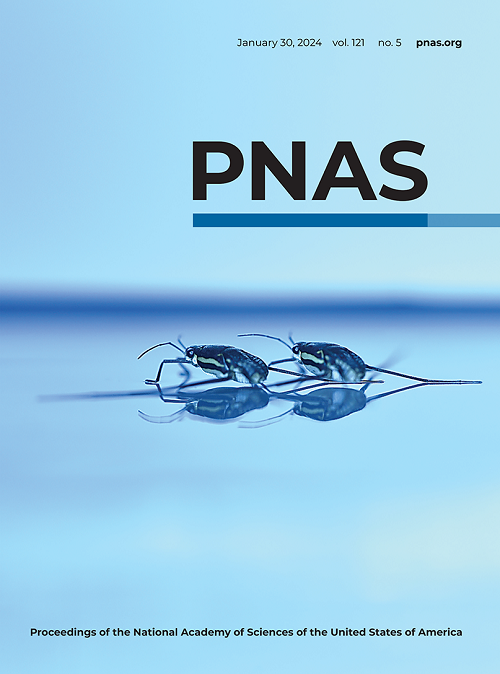Multistage nucleation pathway in LiF molten salt mirrors the crystal–melt interface structure
IF 9.4
1区 综合性期刊
Q1 MULTIDISCIPLINARY SCIENCES
Proceedings of the National Academy of Sciences of the United States of America
Pub Date : 2025-06-20
DOI:10.1073/pnas.2425702122
引用次数: 0
Abstract
Despite over a century of studies, fundamental questions remain about the processes governing crystal nucleation from melts or solutions. Research over the past three decades has presented mounting evidence for kinetic pathways of crystal nucleation that are more complex than envisioned by the simplest forms of classical theory. Such observations have been presented for colloidal and elemental systems with covalent and metallic bonding. Despite the technological and geochemical importance of molten salts, similar studies for these ionically bonded systems are currently lacking. Here we develop a machine learning interatomic potential for a model ionic system: LiF. The potential features quantum-level accuracy for both liquid and multiple solid polymorphs over wide temperature and pressure ranges and accurately reproduces experimentally measured properties. Thanks to the efficiency of the potential, which enables microsecond-scale molecular dynamics simulations, induction times for nucleation of LiF solids from their melts are computed over a range of undercoolings. With the aid of a set of robust local order parameters established here, the simulations reveal that homogeneous crystal nucleation in undercooled melts preferentially initiates from liquid regions showing slow dynamics and high bond orientational order simultaneously, and the second-shell order of both precritical nuclei and the surface of postcritical nuclei is dominated by hexagonal close packing and body-centered cubic local structure, even though the nucleus core is dominated by face-centered cubic structure corresponding to the stable rocksalt crystal structure. Finally, we establish a connection between the crystallization pathway and the equilibrium crystal–melt interface structure.LiF熔盐的多阶段成核路径反映了晶体-熔体界面结构
尽管经过了一个多世纪的研究,关于熔体或溶液结晶成核过程的基本问题仍然存在。在过去三十年的研究中,越来越多的证据表明,晶体成核的动力学途径比最简单的经典理论所设想的要复杂得多。这样的观察已经提出了胶体和元素系统的共价键和金属键。尽管熔盐在技术和地球化学上具有重要意义,但目前缺乏对这些离子键系统的类似研究。在这里,我们开发了一个模型离子系统的机器学习原子间势:LiF。该电位在宽温度和压力范围内具有液体和多种固体多晶态的量子级精度,并准确再现实验测量的性质。由于电势的效率,可以实现微秒尺度的分子动力学模拟,因此可以在一定的过冷范围内计算熔体中LiF固体成核的诱导时间。利用本文建立的一组鲁棒的局部序参数,模拟结果表明,过冷熔体中均匀晶核优先从同时具有慢动力学和高键取向序的液体区域开始,临界核和临界核表面的第二壳层序均以六边形紧密堆积和体心立方局部结构为主。尽管岩盐核芯以面心立方结构为主,对应于稳定的岩盐晶体结构。最后,我们建立了结晶路径与平衡晶体-熔体界面结构之间的联系。
本文章由计算机程序翻译,如有差异,请以英文原文为准。
求助全文
约1分钟内获得全文
求助全文
来源期刊
CiteScore
19.00
自引率
0.90%
发文量
3575
审稿时长
2.5 months
期刊介绍:
The Proceedings of the National Academy of Sciences (PNAS), a peer-reviewed journal of the National Academy of Sciences (NAS), serves as an authoritative source for high-impact, original research across the biological, physical, and social sciences. With a global scope, the journal welcomes submissions from researchers worldwide, making it an inclusive platform for advancing scientific knowledge.

 求助内容:
求助内容: 应助结果提醒方式:
应助结果提醒方式:


